15 May, 2000
kolb journal 05/15/00
Central Power Plant
DRAFT
May 15, 2000
Daily Data (20:30):
Lat. 6400.075N
Long. 06137.929W
Heading 131.955 deg
Air Temp. -4.60C 23.72F
True Wind Dir. 065 deg
True Wind Speed 10 knots
(Note: The heading is the direction the bow of the ship is pointing
at any instant instant expressed in degrees from 000 degrees through
360 degrees. Course is the intended direction of the ship and at a
specified time may or may not coincide with the heading.)
USCGC Healy Facts: Science Systems
Winches-Two oceanographic winches, capable of handling 10,000 m of
3/8" wire, 12,000 m of 0.322" electro-mechanical cable, or 14,000 m
of 1/4" wire.
Two double drum trawl/core winches, capable of handling 10,000 m of
3/4", 12,000 m of 0.680" electro-mechanical cable, or14,000 m of
9/16" wire.
Dear Everyone,
Yesterday the helicopter reconnaissance flights were unable to locate
a suitable ice floe of level compact 125 cm ice for further.
Although the ice trials data are more than adequate, this additional
information would have been the "icing on the cake". The day,
however, ended quite successfully with the Healy completing two
turning radius tests in two thicknesses of difficult ridged
first-year ice. As in the start-up trials, the turning radius tests
were executed in ice 75 cm and 135 cm thick. This resulted in good
data collections and happy scientists.
The Healy is steaming south. This morning, after our night of travel,
the ice has changed considerably. The expansive first-floes and
rubble fields are now to our north. We are smoothly traversing
through pancake and brash ice. Within a few hours the Healy will be
in open waters.
What powers the Healy? What is the propulsion system and how does it
function? The generating plant? The drive With these questions in
mind, Lt. Troy Kunas, Assistant Engineering Officer, responsible for
the Healy's central and power plant, provided me with an overview of
these systems.
The USCGC Healy is the only United States flagged vessel with an
integrated power plant. A common generated power source the central
power plant, supports both the propulsion and the hotel services
(i.e. lights, food services equipment, power for computers, lamps,
small equipment and appliances) of the ship. The power is provided
through a 6600VAC, 60Hz, 3-phase common bus system and is generated
by four diesel generator sets rated at 7.2 megawatts located on the
main deck. If all four generators would be operating, 29 million
watts of power could be generated. The common bus has circuit
breakers that can split the bus, but normally it remains closed.
Additional safety practices not normally a part of ship standards are
necessary on the Healy due to the exceedingly high voltages on board.
A 16-foot danger area surrounds the 6600-volt vicinity. A plasma
blast can occur in the air when an electrical arch passes through it.
This could be compared to lightening. The closer a person is to the
voltage source, the greater the safety risk. Protective clothing
called "Kevlar Flash" gear must be worn and strict safety standards
observed.
To supply the Healy's hotel services at the proper voltages,
transformers and motor generator sets (MG sets) are used. One of the
two transformers reduces the 6600 volts to 450 volts and provides
power to the larger sensitive pieces of equipment. The has two MG
sets that power the smaller more sensitive equipment.
Total harmonic distortion (THD) is a measure of the true departure
from a true voltage sine wave. This is an indication of power. Large
machinery continues to function successfully when THD is present, but
sensitive hotel service equipment (i.e. computers, small machinery,
fluorescent lamps, ship radar equipment) is very sensitive to
harmonic distortion.
A way to maneuver around total harmonic distortion (THD) as a problem
is to use motor generator sets (MG sets). The generator side is
mechanically coupled to the generator, not electronically coupled.
This results in the noise being removed from the sine wave.
Consequently, 'clean' power comes from such a coupled generator. The
'sensitive bus' supplies the Healy's wall outlets for the equipment
and appliances (especially electronics equipment) sensitive to
harmonics. The 'non-sensitive bus' feeds the Healy's large motors and
all equipment not affected by harmonics.
Why does the Healy have total harmonic distortion (THD)? The reason
why THD is an issue is because the Healy cycloconverters.
Cycloconverters put noise onto the bus as a byproduct of their
operation.
The Healy's auxiliary diesel generator (ADG) is rated at 2.2
megawatts and has the capability of carrying both the sensitive (Ship
Sensitive) and non-sensitive bus (Ship Non-Sensitive) as well as the
emergency bus (Ship Auxiliary). Normally the and SA buses are fed
from a motor generator set (MG set). When the ship goes to 'hove-to'
(i.e. anchor or in port without shore power available) not all the
power of the main diesel system is required. At this point, the
auxiliary diesel generator (ADG) will be started and supply all three
buses and the main diesel will be secured (turned off).
Lt. Kunas continued our conversation by discussing the Healy's
propulsion systems. This power is supplied by two AC synchronous
motors that are variable speed and fully reversible. The motors are
fed from the common bus through an AC/AC Cycloconverter system.
What do the cycloconverters control? They control the speed of the
propulsion motors through varying the frequency of power provided to
the motors. How is this done? By taking two 3-phase schemes and
converting them to one 6-phase device and then performing full-wave
rectification, it will provide a 12-plus-power supply to the motor.
The device that is used for the rectification is called a thyrister.
This could be described as a diode having a gate (a current or
voltage signal to the junction). In order to control the flow of
current through the diode, the gate is used to open and close the
diode.
The cycloconverter controls the turning on and off of each of the
thyristers. By controlling this, the amount of power going the main
motor can be monitored and the wave flow going to it can be changed.
The frequency of the pulse directed to the main motor is 0-20 Hz.
Because the motor is synchronous, manipulating the frequency going to
it can control the speed of the motor. When the voltage comes out of
the cycloconverter, it is 2380 volts.
A key part of the operation is the phase shift in one set of the
transformers to give a 6-phase power supply to the motors. One of the
cycloconverter drive transformers is a Delta/Y configuration and the
other one is a Delta/Delta configuration for each shaft. Basically
this provides two 3-phase power supplies that are 60 degrees out of
phase of each other. This, in essence, provides the ability to have a
6-phase power supply to the main motor. The 6-phase power supply when
full wave rectified provides more power, more control, and a smoother
operation of the main motor.
More photos have been added to my previous journals.
Data on ice core 4A of April 11, 2000 follows.
Best regards,
Sandra Kolb
Core 4A level ice 0411, Beginning of Start-Up Test
11-April-00 Total length 66 cm
Longitude 62 deg 09.6713 min
Comments: air temp -10.07 C, beginning of test
Brine volume for -2>T>-22.9
Brine volume coefficients:
F1(T) COEF. -4.732 -22.450 -0.640 -0.011
F2(T) COEF. 8.90E-02 -0.018 -0.001 0.000
|
Depth cm
|
temp C
|
salinity
|
weight g
|
length mm
|
|
5
|
-4.2
|
7.7
|
323.3
|
89.1
|
|
15
|
-4.1
|
6.7
|
337.55
|
93.45
|
|
25
|
-4
|
6.3
|
343.08
|
95.93
|
|
35
|
-3.8
|
5.9
|
341.97
|
96.15
|
|
45
|
-3.4
|
5
|
343.35
|
96.9
|
|
55
|
-2.8
|
5.2
|
347.49
|
98.3
|
|
65
|
-2.1
|
7.5
|
145.18
|
41.3
|
|
dia mm density
|
RHOI
|
brine
|
vol
|
|
|
71
|
0.916
|
0.9176
|
0.0892
|
|
|
70.7
|
0.92
|
0.9176
|
0.0797
|
|
|
70.6
|
0.914
|
0.9176
|
0.0762
|
|
|
70.6
|
0.909
|
0.9175
|
0.0745
|
|
|
70.7
|
0.903
|
0.9175
|
0.0698
|
|
|
70.6
|
0.903
|
0.9174
|
0.088
|
|
|
70.45
|
0.902
|
0.9173
|
0.1704
|
|
|
air vol
|
porosity
|
strength mpa
|
strength psi
|
|
|
0.01499
|
0.1042
|
0.304
|
44.1
|
|
|
0.00946
|
0.0892
|
0.334
|
48.5
|
|
|
0.0159
|
0.0921
|
0.347
|
50.4
|
|
|
0.0209
|
0.0954
|
0.354
|
51.3
|
|
|
0.02624
|
0.0961
|
0.372
|
54
|
|
|
0.02752
|
0.1155
|
0.308
|
44.6
|
|
|
0.038
|
0.2084
|
0.155
|
22.5
|
|
average brine vol 0.0796
average strength mpa 0.335
average strength psi 48.6
--
April M. Metz
Web Designer/Coordinator
Department of Earth Sciences
Rice University
Weiss Geology Building, Rm 318
ametz@esci.rice.edu
713-348-2356
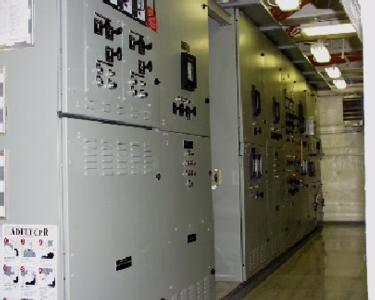
High voltage switching. photo by Sandra
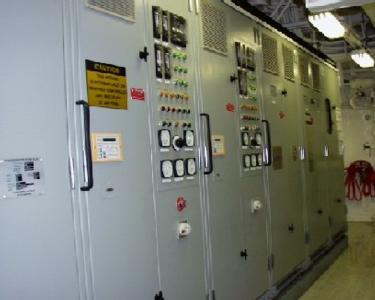
Cycloconverter. photo by Sandra

Motor generator set (MG set). photo by Sandra
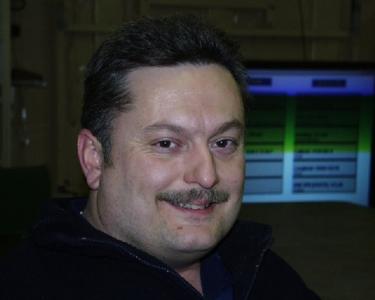
Lt. Troy Kunas, Assistant Engineering Officer. photo by Sandra
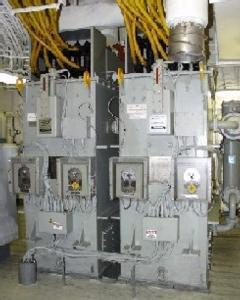
Cycloconverter drive transformer in Delta/Delta configuration. photo by Sandra

Two of the four diesel generators. Lt. Kunas standing. photo by Sandra

Brash ice. photo by Sandra

Lt. Kunas working in the Engineering Control Center (ECC). photo by Sandra
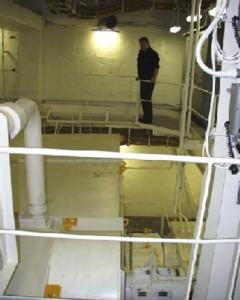
Main motors. Lt. Kunas standing. photo by Sandra
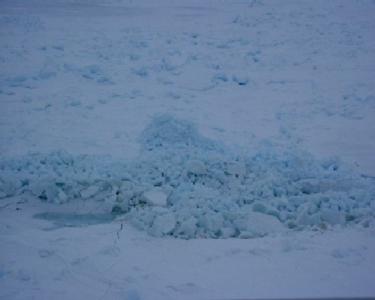
Ridged first-year ice and rubble field. photo by Sandra
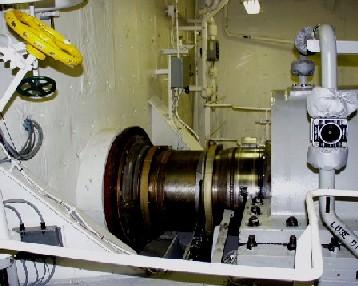
Motor shafting. photo by Sandra
Contact the TEA in the field at
.
If you cannot connect through your browser, copy the
TEA's e-mail address in the "To:" line of
your favorite e-mail package.
|
